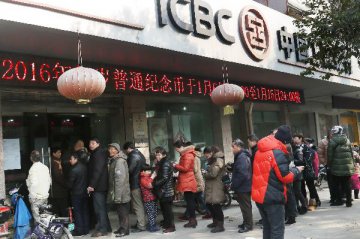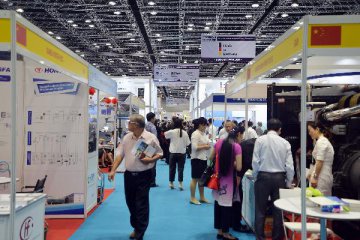
It normally takes six hours to travel to Belgrade from Budapest by train. But this will soon be history: When the planned Hungary-Serbia railway is completed by the end of 2017 as scheduled, the journey will be shortened to less than three hours. The 350-km railroad, 184 km of which will run in Serbia, is designed for electrified passenger and cargo trains whose maximum speed could reach 200 km per hour.
Though tens of thousands of miles away from China, the railway, being constructed by a consortium of Chinese, Serbian and Hungarian companies, represents a flagship project of cooperation between the world's second-largest economy and Central and Eastern European (CEE) countries.
At a launching ceremony late last year in Serbia's second-largest city, Novi Sad, Serbian Prime Minister Aleksandar Vucic stressed that the new railway significantly brings Serbia closer to the central zones of Europe and will help transform Serbia into a regional hub of transportation and logistics.
STRONG PARTNERSHIP
The railway project is a typical example of the intensifying cooperation between China and Serbia. As the first CEE country to establish a strategic partnership with China in August 2009, the Balkan state has since witnessed a growing number of China-related infrastructure projects breaking earth on its soil.
"China and Serbia have given each other firm support on issues concerning their core interests, which shows the essence of a strategic relationship," Li Manchang, the Chinese ambassador to Serbia, told Xinhua.
Major achievements in bilateral cooperation in recent years include the Pupin Bridge over the Danube River in Belgrade, which was China's first big infrastructure investment on the European continent and has greatly improved the city's traffic conditions since its 2014 inauguration, and the Kostolac power plant, the first Chinese electric power project in Europe.
The two countries have also broadened their cooperation in areas like energy, iron and steel, telecommunication and finance. The model of cooperation has also shifted from traditional loan granting to direct investment or joint ventures.
"Such cooperation places emphasis on improving local people's livelihood, so that they can see the actual benefits from closer bilateral ties," said Li.
In 2015, China and Serbia signed a Memorandum of Understanding, pledging to jointly push ahead the Belt and Road Initiative. "This shows Serbia's strong support of the China-proposed initiative, while the two countries have set a great example for win-win cooperation between China and the CEE countries," the ambassador said.
All-WIN INITIATIVE
Actually, since the global financial crisis in 2008, the CEE countries have seen steady development of their cooperative relationships with China, which reached an unprecedented level in 2012 with the establishment of the 16+1 mechanism, a cooperation platform for China and the CEE countries, and the convening of the first 16+1 summit in Warsaw, Poland.
In the past five years, the two sides have also started to reap fruits of their cooperation. In 2015, China and the CEE countries scored an overall trade volume of 56.2 billion U.S. dollars despite the sluggish global economic growth. Chinese companies have invested roughly 5 billion U.S. dollars in the CEE countries, which have also made investments worth an estimated total of 1.2 billion dollars in China.
Meeting with leaders from 16 CEE countries last November in Beijing, Chinese President Xi Jinping said that China welcomes the participation of the CEE countries in the Belt and Road Initiative. With China having signed cooperation deals with Poland, Serbia, the Czech Republic, Bulgaria and Slovakia, further steps were taken in synergizing China's development plan with those of the five CEE countries.
The Belt and Road Initiative, first proposed by President Xi in 2013, is aimed at building a trade and infrastructure network connecting Asia with Europe and Africa along the ancient trade routes, of which the CEE countries are an essential part as a quarter of the countries along the routes are located in the region.
Over the past three years, the initiative has achieved a good start through promoting interconnectivity construction, establishing financial platforms such as the Asian Infrastructure Investment Bank, expanding investment and trade in related countries, boosting cultural exchanges and enhancing mutual understanding.
According to Chinese Foreign Minister Wang Yi, over 70 countries and international organizations have voiced their support for the initiative, with 34 of them having signed inter-governmental agreements on co-constructing it.
BOOSTING EUROPEAN INTEGRATION
"Aligning the 16+1 mechanism with the Belt and Road Initiative will provide new opportunities for China and the CEE countries to deepen cooperation in production capacity, transportation, infrastructure and finance," said Cui Hongjian, a China-Europe relations specialist at the China Institute of International Studies.
Yet China rejects comparing the Belt and Road Initiative to the Marshall Plan, or the U.S.-led European Recovery Program launched after World War II and under the shadow of the Cold War.
"The Belt and Road Initiative opposes seeking dominance in regional affairs or sphere of influence, does not intervene in internal affairs of regional countries, and is in accord with existing regional mechanisms and cooperative proposals," said Liu Jianchao, a former Chinese assistant foreign minister. The initiative encourages related countries to join hands voluntarily, follow market and business rules, and push ahead on an equal and mutually beneficial basis, he said.
For the CEE countries, joining the Belt and Road Initiative can benefit their integration with the European Union (EU), Wang Yiwei, head of the European Union Research Center at China's Renmin University, told Xinhua.
The China-EU 2020 Strategic Agenda for Cooperation, adopted at the 2013 China-EU summit, has endorsed the establishment of the 16+1 mechanism and clarified its role, said Wang, citing the fact that 11 of the CEE countries are EU members and the remaining five are also applying to join the bloc.
"Some EU countries once suspected that the birth of 16+1 might be a 'divide and rule' strategy of China toward Europe," said Wang. "They have now realized that the mechanism is actually a new platform quite helpful for the European integration."





















Latest comments